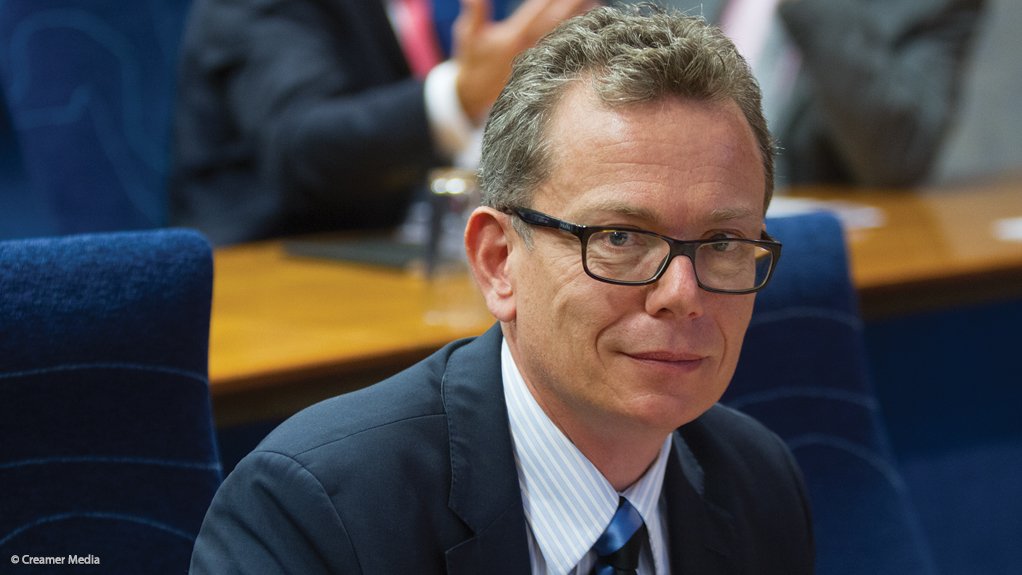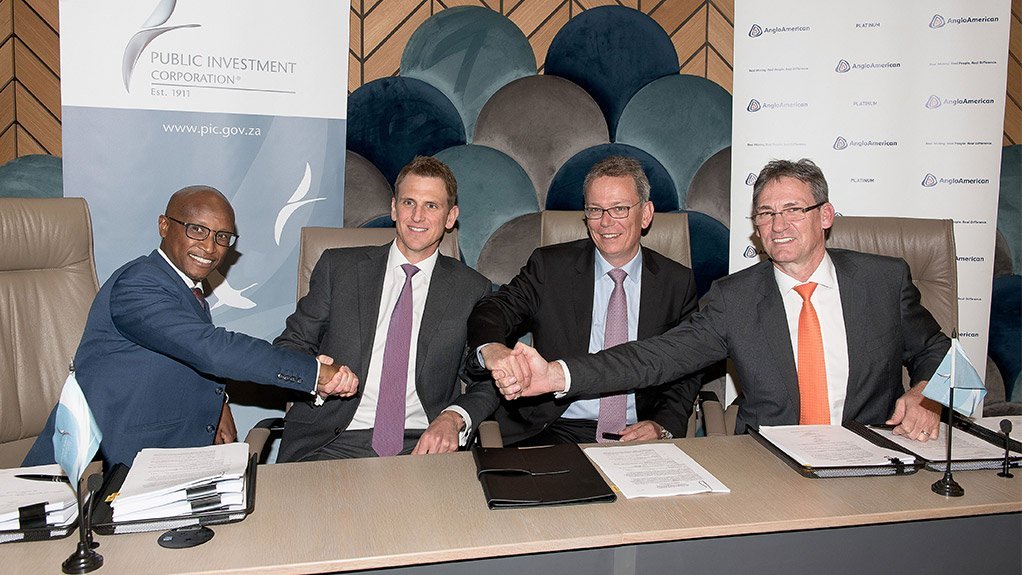JOHANNESBURG (miningweekly.com) – The Japanese trading giant Mitsubishi has thrown its weight behind technologies that harness the high-performance characteristics of platinum group metals (PGMs) by joining Anglo American Platinum (Amplats) and South Africa’s Public Investment Corporation (PIC) as an investor in AP Ventures, which has a special investment interest in hydrogen infrastructure, fuel cell electric mobility and energy storage.
In July, the PIC and Amplats each committed R1.3-billion to AP, the first venture capital fund of its kind specialising in pioneering technologies and businesses that make use of PGMs.
Now the giant Mitsubishi, which develops and operates businesses across virtually every industry, including industrial finance, energy, metals, machinery, chemicals and daily living essentials, has become the venture’s third partner.
The PIC and Amplats have become cornerstone investors in the new, independent AP Ventures, which is led by a specialist global investment team that previously formed part of Amplats’ earlier investment in PGMs opportunities.
“We hope to nurture the growth of innovative precious metals technologies that will help improve lives and the society we live in,” Mitsubishi Corporation GM for Precious Metals, Mineral Resources Trading Division Yusaku Yukita stated in a release to Creamer Media’s Mining Weekly Online.
Mitsubishi Corporation’s activities have expanded far beyond its traditional trading operations to include investments and business management in diverse fields including natural resources development, manufacturing of industrial goods, retail, new energy, infrastructure, finance and new technology-related businesses.
With over 200 offices and subsidiaries in 90 countries and regions worldwide and a network of 1 300 group companies, the Japanese corporation employs a multinational workforce of more than 70 000 people.
“We’re delighted to welcome Mitsubishi Corporation as an investor in Fund II. Even prior to the formal announcement we’re already seeing the benefit of our relationship,” said AP Ventures managing partner Andrew Hinkly, who formerly headed Amplats marketing thrust.
PIC’s stated motivation is to help to stimulate and sustain the demand for PGMs in the long term, and by so doing benefit its clients and preserve long-term mineral wealth for all South Africans in a world that needs solutions to renewable energy integration, resource scarcity and a growing global population.
In addition to providing solutions in hydrogen infrastructure and fuel cell electric mobility, technologies powered by PGMs are also providing solutions in the fields of water purification and medical device development.
Amplats announced in July that it would be transferring its PGM development investments in Altergy Systems, Food Freshness Technology Holdings, Greyrock Energy, HyET Holdings, Hydrogenius Technologies, Primus Power and United Hydrogen Group to AP to give the venture fund the independence it needed to attract additional outside investment and boost scale.
Developing demand for PGMs has been a long-standing strategic priority of Amplats, which in 2009 committed $10-million to PGM-based technology start-ups and later pledged six times more for early stage and growth capital investments.
Headquartered in London, AP is committed to opening a further office in South Africa and to raising additional capital from other investors.
While platinum demand is crucial to sustaining employment in the PGM mining sector, the potential for PGM-linked job creation in the local manufacturing sector is also presented in the areas of hydrogen infrastructure, fuel cells, energy storage, water purification, sensors and durable electronics.
The PIC is already a significant investor in the platinum mining industry and regards the long-term sustainability of the industry as being critical to long-term returns of its portfolios.
Now Mitsubishi is adding to the momentum that is steadily building across a broad front.
“What has really been a twinkle in everyone’s eye around fuel cells is really starting to change,” the Financial Times quoted Amplats CEO Chris Griffith as saying, following the company's hosting of a visit to China to give analysts and journalists first-hand insight into the Asian giant's backing of hydrogen fuel cell development.
Platinum is currently considered the most efficient metal for catalysing the chemical reaction that takes place in hydrogen fuel cells.
Moreover, using renewable energy to produce the hydrogen renders the entire exercise carbon-free, which is what the world is demanding.
As economists have noted, South Africa’s National Development Plan (NDP) offers a clear mandate for moving the South African economy onto a low-carbon path and makes recommendations as how best to manage this transition in a just manner.
As new technologies and new facts regarding the low cost of wind and solar energy in South Africa have emerged, it has become necessary to review and rearticulate the relevant aspects of the NDP in order to recast the low-cost, low-carbon energy base as a core component of the country’s path to prosperity.
A body in the Presidency, such as the National Planning Commission, could well be tasked with the responsibility of developing an integrated vision for how best South Africa can use its sun, wind and PGMs endowment to maximum economic advantage to meet low-carbon demands.
A special economic zone (SEZ) for fuel cell development, proposed by the Gauteng Industrial Development Zone initiative and Impala Platinum (Implats), has been given the thumbs up, Implats fuel cell coordinator Fahmida Smith told attendees at the International Partnership for Hydrogen and Fuel Cells in the Economy Industry Forum, in Pretoria, earlier this month.
The Hydrogen South Africa strategy has produced inventions and pilot projects that are nearing commercialisation, Department of Science and Technology Hydrogen and Energy chief director Dr Rebecca Maserumule told attendees at the same conference.
The SEZ comprises 16 ha of land donated by Implats and is located near the Impala Refinery in Springs, where Implats intends to create skills capacity and leverage the current supporting infrastructure for both fuel cell manufacturing and deployment.
This infrastructure includes the availability of pure hydrogen gas and natural gas on site, as well as an operational hydrogen refuelling station.
Fuel cell components manufacturer Isondo Precious Metals, an enterprise supported by South Africa’s Department of Trade and Industry, said earlier this year that it hoped to commission its platinum-containing membrane electrode assembly (MEA) manufacturing plant in the upcoming months, pending the finalisation of the balance of funding. The MEA is the core component of a fuel cell.
Mineral Resources Minister Gwede Mantashe expressed strong support for the development of platinum demand at this year’s Joburg Indaba, where he called on the country to promote the fuel cell as a means of taking clean energy across the country. “Let’s look into growth potential and investment potential and give young people opportunities,” Mantashe said.
EMAIL THIS ARTICLE SAVE THIS ARTICLE ARTICLE ENQUIRY
To subscribe email subscriptions@creamermedia.co.za or click here
To advertise email advertising@creamermedia.co.za or click here













